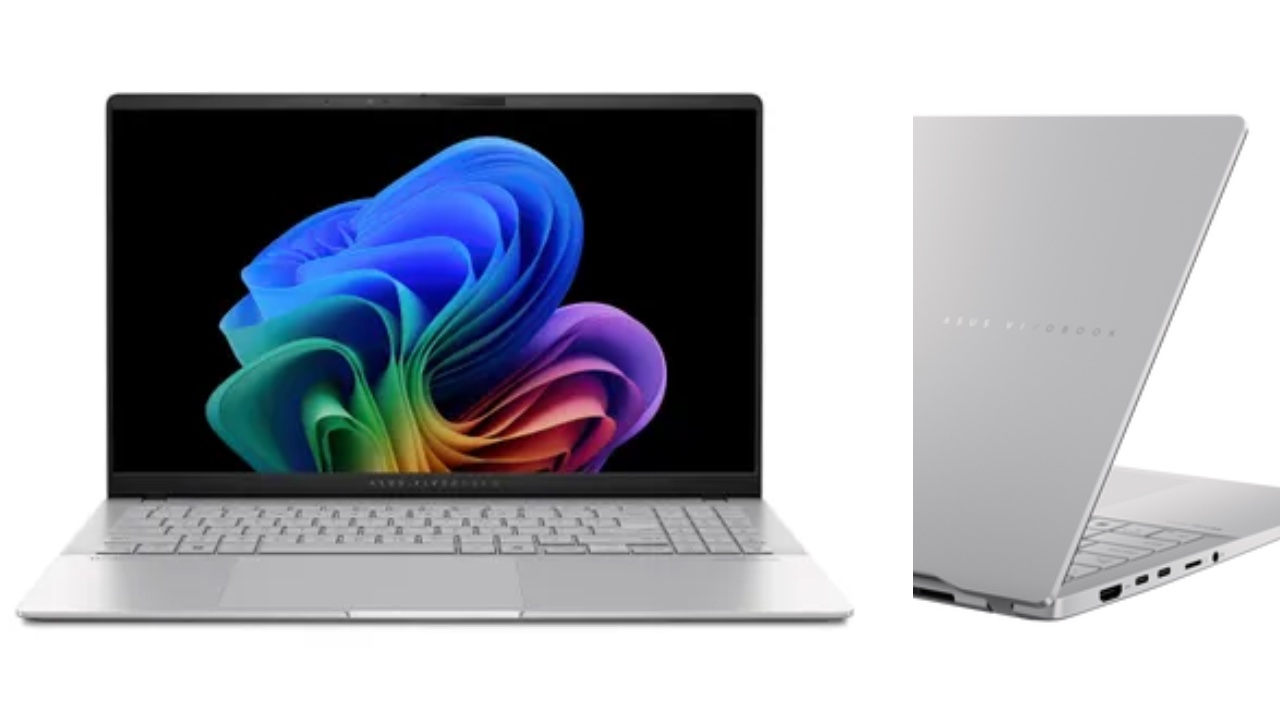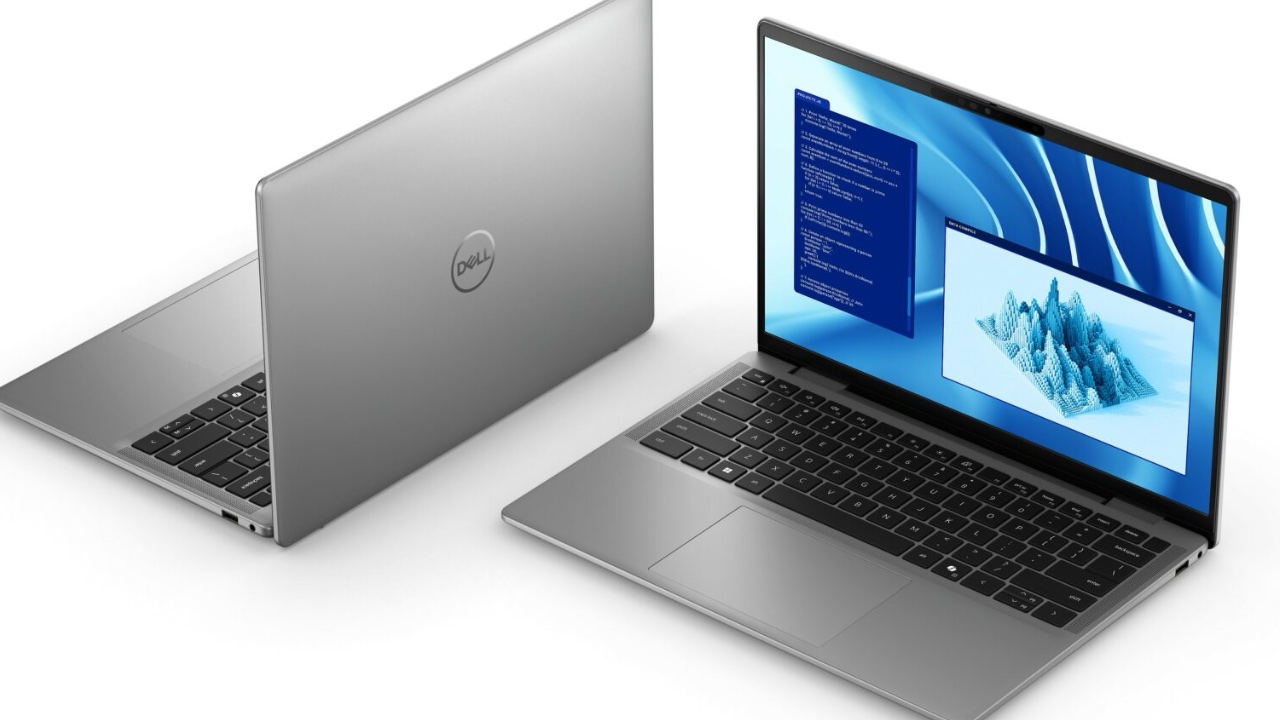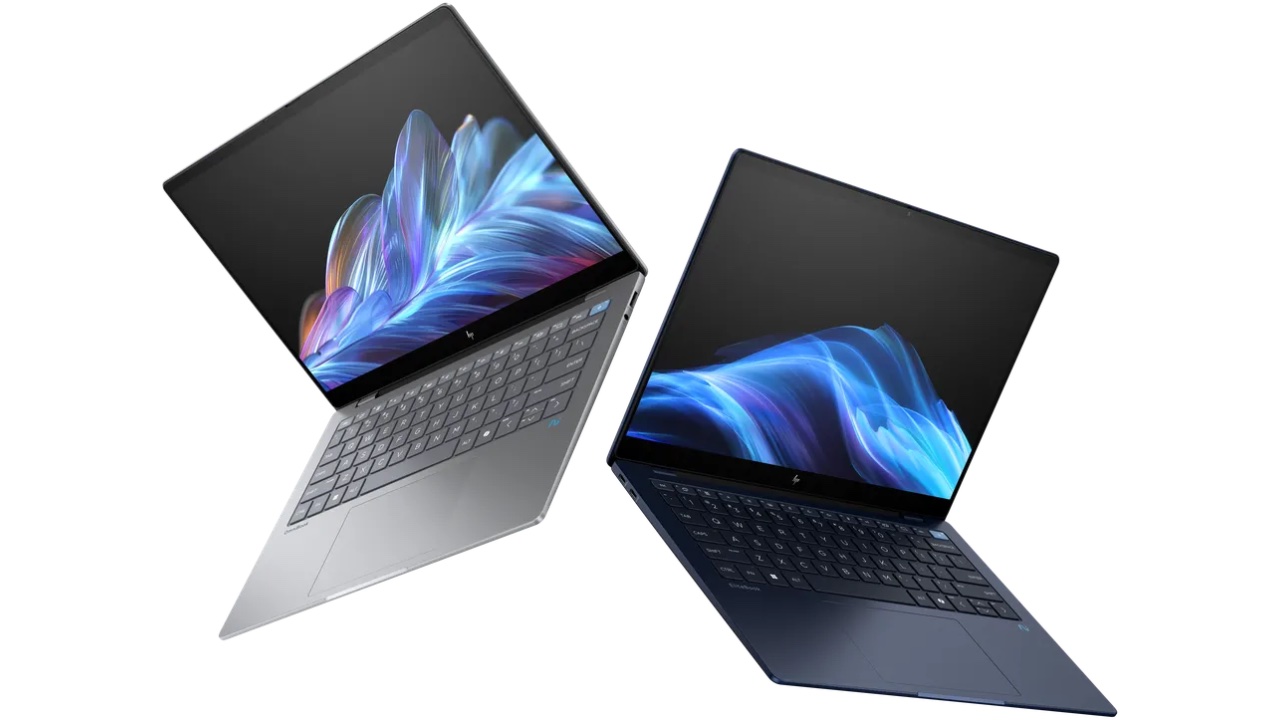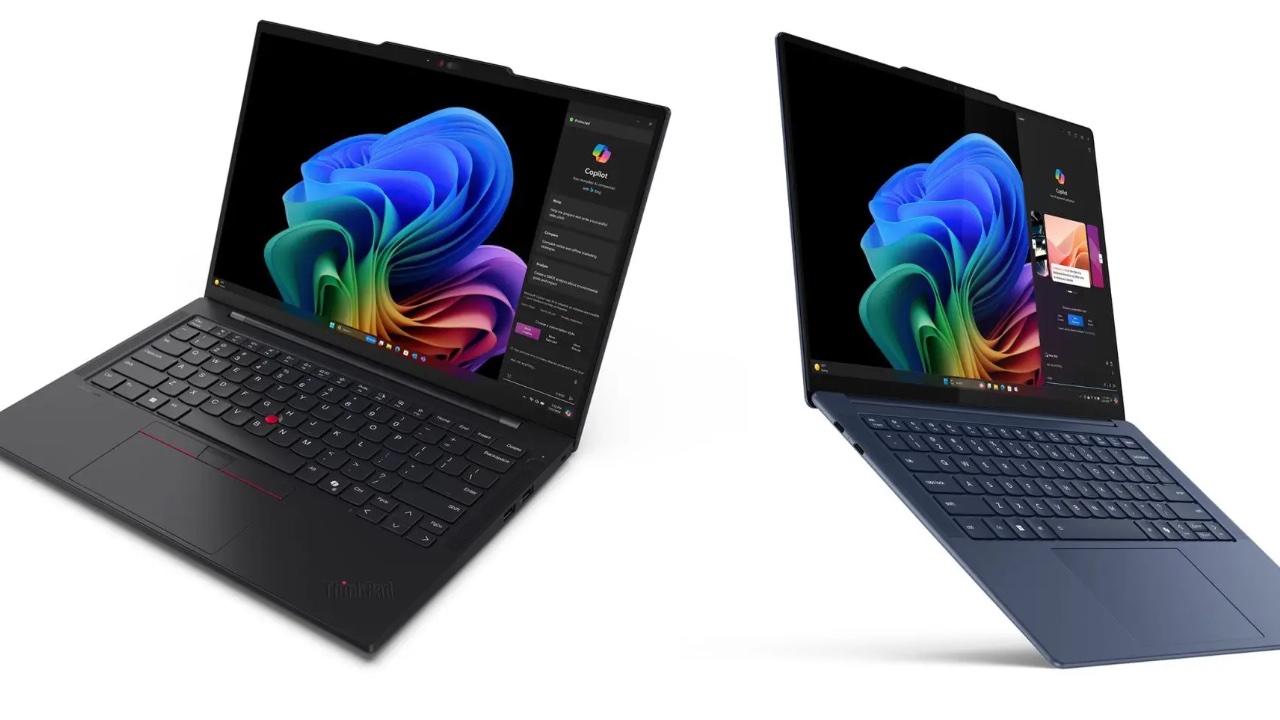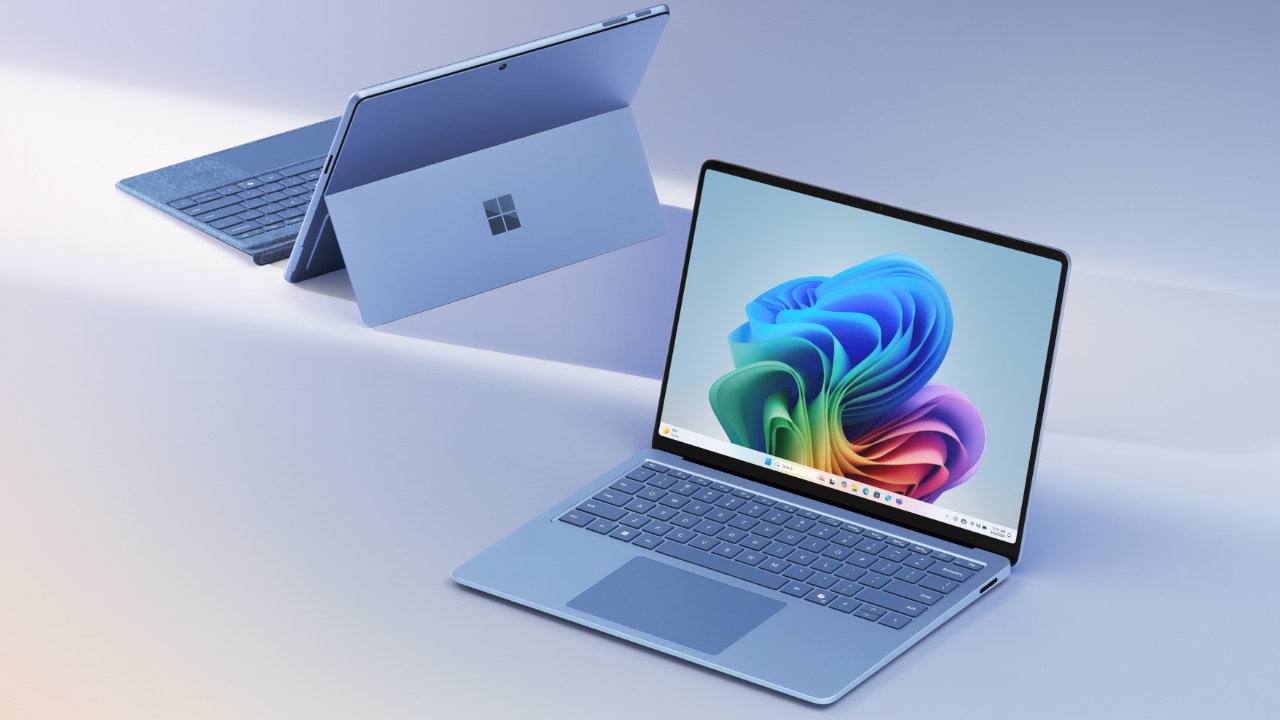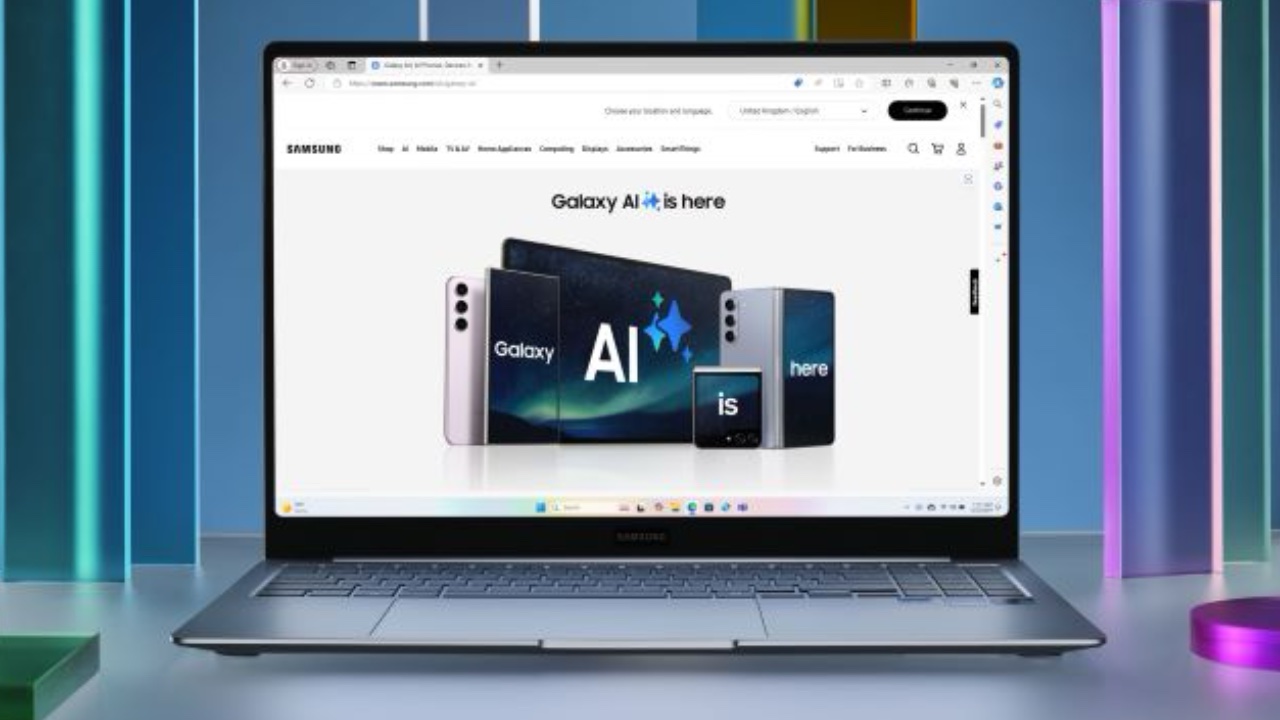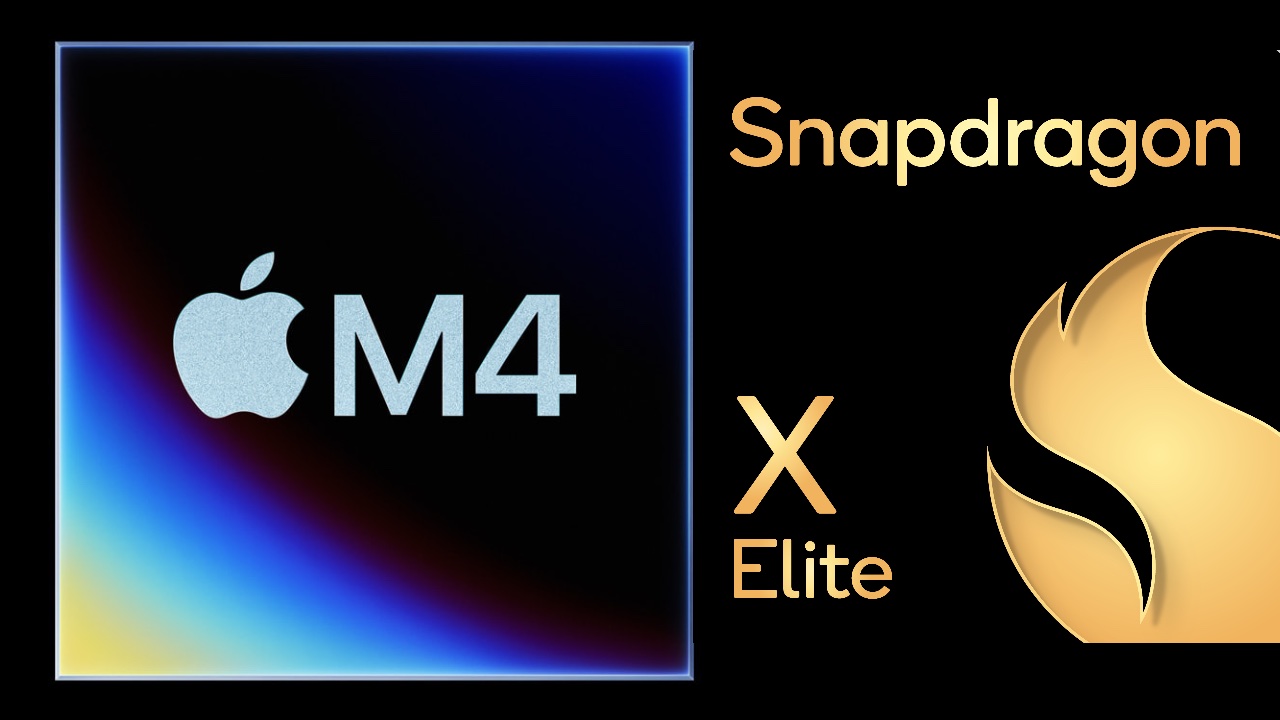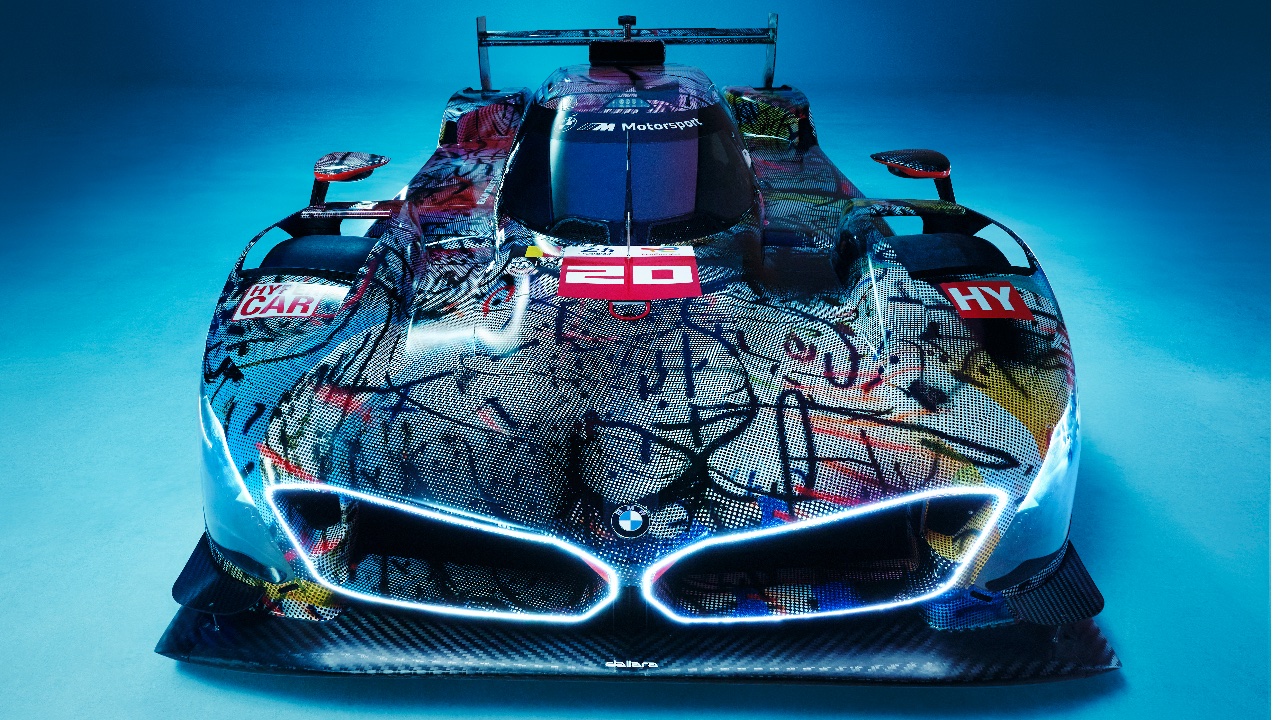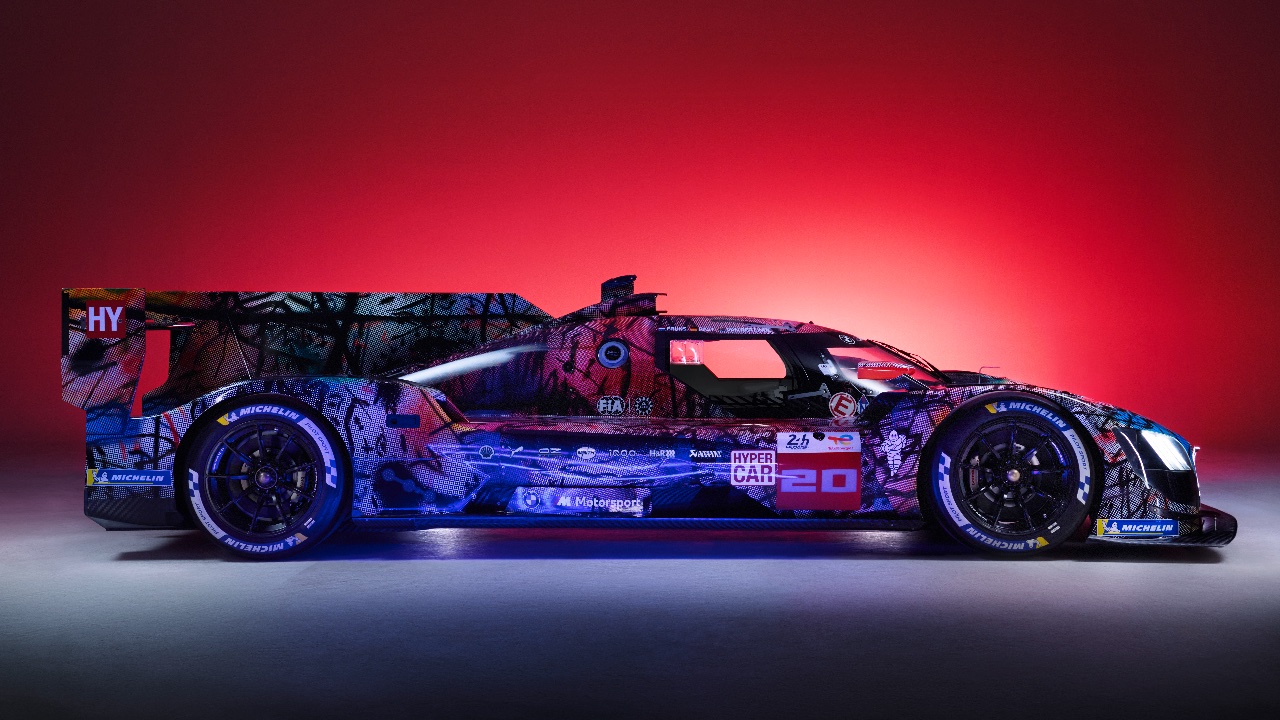Microsoft made some unusually major moves ahead of its Build developer conference: It announced a new Copilot+ initiative for powerful AI PCs, which will be led by the new Surface Pro and Surface Laptop. These machines are powered by Qualcomm's new Snapdragon X Plus and Elite chips, and they come with a special version of Windows 11 optimized for Arm mobile chips and AI. Basically, Microsoft is doing for PCs what Apple did with its M-series Macs four years ago.
In this bonus episode, Devindra chats with Pavan Davuluri, Microsoft's head of Windows and Devices, about the new Surface devices and the Copilot+ PC initiative. We still don't know how well these new machines will perform, but it sounds like Microsoft has certainly heard our complaints about Arm-based Windows devices.
Listen below or subscribe on your podcast app of choice. If you've got suggestions or topics you'd like covered on the show, be sure to email us or drop a note in the comments! And be sure to check out our other podcast, Engadget News!
Subscribe!
Transcript
Devindra: Hey everyone, this is Devindra here. I had a chance to chat with Pavan Davuluri, the head of Microsoft Windows and Devices, basically the team in charge of Surface and Windows. And we talked about the new Copilot Plus Surface PCs, the Surface Pro and the Surface Laptop, and the whole new Copilot Plus initiative in general.
It's kind of a big move for Microsoft. We've reviewed quite a few of the ARM based Windows PCs and you know, they have not worked out so well. So I think this could be different, at least from the benchmarks we've seen. We still need to test these things, but I think Pavan is also aware of Microsoft's own issues around this kind of hardware and they're aware that this seems like a big push for them and a good opportunity to kind of shift to a mobile platform, just like Apple did.
So anyway, here's my chat with Pavan.
Devindra: Pavan, thank you so much for speaking with us, how do you feel about these new devices and Copilot Plus as an initiative?
Pavan: I'm excited. It's been a multi-year journey for our team. So I'm excited to share. I think the work that we've been on for some time now. And I'm also excited because I think it's the start of a journey for us.
So we had an opportunity to tell our story, bring a bunch of product and value out there and then I'm excited to see what people will do with it.
Devindra: Awesome. I remember when there were rumblings about this I think for the past year we were hearing that Microsoft was doing something maybe with ARM chips again and with Qualcomm and we saw the new Snapdragon benchmarks I think last fall.
And we started getting a little excited and also a little worried, because personally, I have like a love or hate relationship with Windows on ARM, I reviewed the first Surface with Windows RT, it was, it was a worthy attempt, and then most recently we've seen the Pro X devices and all those things, and recently I did the Pro 9 with 5G, and even then I was like, I don't, I just had a lot of issues with it.
So, what did you guys learn from your past experiences with Windows on ARM that you brought into this one?
Pavan: That's a good question. I do remember your thoughts on them at the time, and we actually did pay attention to them yeah, as a team, collectively. There's a couple of things I think that we learned that were meaningful.
One that I think we've addressed in the conversation. Current generation of the Snapdragon X parts that Qualcomm team has delivered. Performance matters. And so one of the foundational investments we've made in much more performance CPUs, both in terms of the CPU energy efficiency, but also peak performance of these CPUs.
We love multithreaded performance because it matters to the operating system, but we wanted to make sure we had good sustained and peak performance. I think that's a significant improvement from our previous generations that we, you know, we learned about. The second big thing was the work that we did on what we're calling Prism, the new ARM emulator.
We, we certainly learned through that journey that emulation performance matters both in terms of the efficiency of the emulation itself and the breadth of catalog compatibility with emulation. So that was a big lesson learned. I think we've made good progress. The third thing really and hence it's been a multi year journey, is making sure we have great performance.
Native arm app experiences for us. And so we have worked across the breadth of the windows ecosystem to go deliver on great app experiences, and we are very excited that our collective ecosystem partners across a range of top app categories. Now, those apps are native. And so whether you look at you know, Disney and Spotify had one in the spectrum, it'll be photoshopped or, you know, your most used browsers.
I think at this point in time, Mhm. Certainly they're all native. Our ecosystem is certainly committed. And then the big thing for me was the biggest developer on Windows is Microsoft. Microsoft bringing native apps has been a huge thing for us. And so I'm super proud of the Edge team having a native version now for us.
The M365 app estate really is native. A bunch of our security products are native. Your inbox apps, your calculator is native. And so, yeah. I think those are big lessons learned and be a problem to bear.
Devindra: Gotcha. I will let you know, like, I'm personally, maybe I'm weird about this, I'm more interested in what's going on with Windows on ARM than the AI stuff.
I think the AI stuff is cool, has a lot of potential, but we've lived through Windows on ARM for a long time. Like, oh, this is finally here, you've got good battery life, you've got a lot of stuff. Can you tell me, like, these improvements, will they trickle down to the existing devices? Will the Surface Pro 9 5G, the Pro X, will they get benefits from these changes to Windows?
Pavan: Some benefits will trickle down to those. Some are going to be platform dependent, and so a lot of the work that we did was really are learning to make the OS and the silicon platform a deeper, more synergistic vehicle for delivery. And so, in those instances, the OS improvements are tied to the platform themselves, but not all, some of them.
And we continue to look at ways of finding ways Find a way to, you know, bring them back to our broader ARM install base but I think we're going to prioritize the Snapdragon X series going forward. Gotcha.
Devindra: Is there a new name for what you're doing with this Windows? Microsoft has been very, very big on different Windows names, like RT and we, we've gone through a couple.
Are you guys calling this anything differently? Referring what this Windows on ARM is versus the old stuff?
Pavan: It's Windows 11. Okay. And in, you know, in my mind's eye, there isn't, there's only one flair of Windows, it's Windows 11. And that's true for consumers Devindra, it's true for our commercial customers, it's true for developers, in my mind, you know, importantly.
So we don't want people to have to think about all of that, we want them to be able to build apps for us to be predictable in certain set of ways that matter to them, and then unlock the ability to build devices and, you know, people have choice on the kinds of products and platforms they want to build.
Devindra: Gotcha. And these first batch of devices, the Surface Pro, interesting, you guys aren't using the numbers anymore. I see Surface Pro 11th generation is how you're referring to it in documents, and the new Surface laptop, these are Qualcomm powered machines right now, but we're also, you talked with Intel, you talked with AMD, they were here, or they at least said that they have hardware coming out.
Can you tell us how that will fit into the Surface lineup, or are we just thinking about Qualcomm Surface devices for now?
Pavan: Our partnerships with AMD and Intel have been longstanding indeed. Certainly for the Windows ecosystem at large, the operating system itself, but also on Surface. And I think we will make decisions on what silicon we use in Surface products based on how do we best build a system that serves end customers and certainly represents innovation in the Windows ecosystem.
And we look forward to working with all of them.
Devindra: Gotcha. Yeah. And you guys also have a lot of partner hardware coming out, which I was surprised to see. Normally, when this happens, you have your devices and you're like, Hey, everybody, follow along. But you have them now. You have all the major manufacturers.
You have new machines coming. Can you talk about the process of basically coordinating that? Because I feel like that makes Copilot Plus feel like a true initiative and not just Microsoft putting a flag in the ground saying, Hey, everybody follow us, right?
Pavan: You nailed it. I think that is exactly the intent.
And that is the, I think first I will say I am Deeply grateful for the partnerships across the windows ecosystem. So you saw the major partners out there today. They have been with us again on a multi year basis on this journey. For sure. I think for me, having been on the windows team and in the past in the surface team for some time, I think the level of partnership we have seen from them and from us is the thing that I have not seen before.
I guess it's probably the simplest way to describe it. They have been great in terms of Making sure we were building product with. the value prop that actually mattered and delivered to them. That was, you know, a great place up front where they were part of the product making journey with us. We've had a deep co engineering cycle, because building these great systems at the end of the day does require both the hardware platform, the silicon, certainly the operating system, app layers to all be equipped.
This is sort of the idea of the system configurations that they talked about. And so we went through, you know, a whole generation of co engineering with them together. And then now, when it comes to going to market, and telling our story, and landing our customers through it, I find that we are deeply aligned together.
Because I think, to your point, whether it's performance, and, you know, fundamentals that we can go deliver on, or unlocking new AI things, it's a thing that, you know, it captures all of our imagination, and all of our mind share. It's a thing I think they're as excited about as we are. And you're right. It doesn't, I don't think it's a meaningful exercise across the industry if our partners are not there with us.
I'm actually just grateful that our collective team, our marketing team specifically our field team, we were able to just, and engineering, of course, you know, pull them all together. It was great.
Devindra: I think it's kind of interesting because Apple kind of did this four years ago, too. Like, we all covered the, the M series chips and everything, but they have the advantage you guys don't, right?
Like, they own the hardware, they own the software. They could be like This is a big ship, but we're just turning. We can just do it. You guys can't. You have to work with your partners to kind of coordinate all that. How long have you guys been working on, like, making this transition?
Pavan: To your point earlier ARM itself is not a new construct for us.
This particular, and we've been at it for many generations, as you know, this particular iteration has been a few years for us. I'm, you know, I'm almost, I'm drawing a blank and where do I draw the line or the starting line for the exercise? Because some of these things start as a sort of an organic, you know, thought process.
Devindra: I feel like the Pro X was this, was the point where you guys were like, Hey, here's a premium surface that's thinner, lighter, you Here's a vision of what the surface can be and then kind of the design follow that. So were you thinking about it by that point? That was three or four years ago.
Pavan: Yeah. Yeah, we were definitely thinking about it in that window of time.
Devindra: Yeah.
Pavan: Yeah. I would also say the big thing in addition, I mean, the thing that we really learned, I would say 2020, 2021, is thinking of it from a system standpoint and then adding AI as a first order construct from Silicon through, you know, platform level components, the OS to the shell layer to app experiences.
Yeah.
Devindra: I think something I say often, and don't take this too harshly, but I think timing has never been Microsoft's strong suit. I think Microsoft tends to deploy things, maybe a little too early. I saw, I was, I was growing up when web TV was a thing. I remember pocket PC devices. I remember Windows Mobile.
I had a Zune. I had multiple Zunes. So, I The timing, it seems interesting how quickly you guys jumped on AI last year with Bing search and everything and with the launch of co pilots, it does seem like you guys are kind of taking a leadership, I guess, role in timing for AI because everybody kind of had to respond to what you were doing.
Can you talk about just how that feels? Does it feel different to you for how Microsoft is approaching new technology?
Pavan: It does. It does feel different for sure. I personally find it Pretty exciting and energizing at the same time. It's a little humbling as well I think to your point there is we certainly want to be in a place where we have enough composition and you know meaningful value and completed execution, you know quality of the product itself. And so it certainly puts pressure on that to make sure we are showing up in a leadership time frame with a great product But it is a different feeling for sure and I'm kind of excited about it because I do think we have a bunch of things we have learned in the last 18 months with the starting with the Bing work that happened last year.
Through the M365 co pilot work that has happened and now we're calling the Windows co pilot runtime on device models and Windows 11. Where we have a ton of great lessons learned across the company that is a kind of a flywheel and accelerator for us. Responsible AI is one good example. That team has learned a lot.
They are now an integral part of how we think about it. Same thing applies for app teams. You know, they're collectively in an AI first world. And so it's a lot easier for us to go orchestrate work across the company.
Devindra: Can you talk more about the idea of responsible AI and how you guys are thinking about it?
Because the Recall feature seems very cool. Seems like something a lot of people could use. And then I think, like, oh man, this is, the way people are worried about people snooping in their browser history, right? There's the meme, if I die, please delete my browser history. Stuff like that. And recall is just like, oh, you've created this thing that will see everything we're doing online.
How are you guys thinking about the usability aspect of something like that, and also the data privacy aspects of it?
Pavan: Yeah, it's a, it's a really good question, and I think it's important. For us, thinking about earning permission and trust through, you know, security and privacy, I think, was front and center in our mind as product makers as we were building that feature, Devindra.
If you, you know, when you start playing with these Copilot Plus PCs, you'll see that as you go set up the PC for the first time, we are very deliberate in taking customers through a user experience, you know, onboarding journey that makes it very clear for them on what that experience is like. And And making sure we're educating them and then giving them control is fundamental.
So in the onboarding experience. The second big thing is in the ongoing use of the product, we make it simple and intuitive so you are in control and you understand what is happening. And so I think as you get comfortable over time you know, you either give the experience more or less license. And so you're always in control.
And we do that with the task bar and keeping the feature front and center with you for recall. And the third thing, I think we want to take the stress out of making it feel like you made a decision that you can't undo. And so we give you enough control in the feature in the arc of time. And so you can, you know, delete, you know, instances from the past for instance, and so on.
So we're using a lot of constructs that people are familiar with, with, with data that it's already, you know, You know, the content rather that they're sharing. Finally kind of an important decision we've made. For those PCs is the data, the semantic index is stored locally on your PC. And that is a thing that we feel confidence in being able to stand by.
And I think at the end of the day that is a foundational component of saying we're not moving that data set to the cloud, we're not training on it, for instance. There's no other framework that has programmatic access to it. And so so I think those are, you know, first step in the journey for sure.
But those are some core components in making sure we meet those expectations.
Devindra: How are you guys thinking about recall when it comes to like multi user systems or shared systems? Because, hey, if everybody's using a different account, then problem solved. That's pretty easy. Everybody logs in. But for a lot of family computers, it's just kind of sitting there and people run up to it and do their work.
How does recall work in a shared user environment like that?
Pavan: It follows a user account. And so to the extent there's multiple users, you have multiple indices. If there's one account that's shared by multiple people, that's a shared index. Hmm.
Devindra: Gotcha. I guess I think that makes sense. Can we talk about the devices specifically?
So first of all, interesting that you guys kind of did the step back from the numbers just Surface Pro and Surface Laptop. It always feels interesting when a company does that, like you're kind of. Stake and claim. This is different. Yeah, point in time there. The actual hardware doesn't seem that different.
You know, the Pro I've always liked is a, like, very sleek, light device. Thinner bezels on both. Are there, are there hardware changes that you want to bring up? I know OLED is now an option on the Pro. Yeah. Any in the quad cameras, the quad HD cameras, very nice. Anything else you want to highlight in the new models?
Pavan: First of all, your point, I think your observation is right on the money for us. We think co pilot plus PCs are the start of a new generation. And so we did want to put a marker for these devices represent that new class for us. And, and like you said earlier, it's not just Surface. There's a whole ecosystem that believes in that.
One of my favorite personal features that I love on the Pro is the detachable keyboard. I do love that. That It was, you know, when we talk to customers, the number of times people ask us for that feature without quite knowing that they're asking us for it yeah, yeah, the design team in my mind, sort of, you know, going through intuitive understanding of how people work that flexibility and freedom is probably the Kind of the iconic thing that we've introduced this time around that has been in the work for some time.
It's not easy because you want to deliver on great battery life on that little keyboard. It's gotten thinner, it's gotten more stiff and so you still have to have a battery and have great battery life on it. It has to be reliable, you know, because it's your keyboard experience. On the laptop there are a bunch of things that I love.
You, you observation on the bezels getting thinner and lighter. I love bezels, yeah. Thin bezels, yeah. Thin bezels. I continue to love the 3x2. I feel like in the form factor it gives me the most bang for buck in terms of just workable real estate on the machine. I personally love the the user physical design of the product with ports and accessibility.
One of the things that is awesome about Windows is, I think, what people expect by way of I. O. and port interop, and so, on my laptop, at least, I have multiple 4K monitors on the screen. That is a thing I can kind of go after. So there's lots.
Devindra: I do want to talk about the Flex keyboard, because it seems like, again, Microsoft does this thing where it's like, ah, so close.
So close. It's a great idea. It is $350. And that is just... you're killing me. And then you have the bundle at $450. Okay, fine. I can accept that, although I think that's a little too expensive. But I also know you guys are keeping the existing Pro covers around. At their existing prices. This felt like a great opportunity for Microsoft to at least put a keyboard with the Surface.
And I think, Okay. Ever since the Surface RT, I feel like I've been asking this question every year for the past 10 plus years. I'm going to keep asking it. What is the thinking about just putting a keyboard, like including a keyboard with the Surface? Because I think about these things differently than the iPad.
An iPad is a tablet. You're going to use a tablet first, maybe occasionally with a keyboard. You guys keep talking about the Surface as a PC, as a Windows machine. Yes. Nobody wants a Windows machine without a keyboard. So, I don't understand the justification of not at least bundling something with it.
Pavan: You know, so first, your dataset comment is absolutely right.
We, we have, you know, Most customers attach a keyboard to to the device itself. One thing we do have is flexibility of choice in the keyboards themselves, and so bundles and attach wise is freedom and flexibility across different configurations of keyboards and such. But I hear you on the desire to have them attached.
You are not alone, Devindra. And I'm sure the team will find a way, as best as we can, to make that happen when we can. The opening price point comment you made, I think that's a great point as well. And we are looking to learn through this iteration. We'll look at where customers are, where we are with demand, how the Flex Keyboard performs across countries, and We'll certainly account for it as we go forward.
Devindra: I would, I definitely can't wait to see that drop in price. It just feels like whenever you guys talk about surface pricing in particular, it's like, well, yes, that's the tablet. So, yes, it's $999, but you have to add another $140 or $180 or $350 for the Flex to actually make it a useful computer. So, I feel like that just fudges with the way we talk about pricing around these things.
So, I'm hoping Microsoft is just aware. And I feel like, I don't know, I feel like it would be easier to talk about these things with consumers and to sell them on it if they didn't have to think about like, oh, I got to add this to the price. I have to buy a Surface Pen. I have to do all this other stuff.
It seems like the Surface experience has always been a little too complicated rather than You buy a MacBook, you know,
Pavan: The $999 comment versus a MacBook. Specifically, the surface laptops are $999 is a full laptop experience. And it is a, you know, I think, in fact, there's more in that laptop feature set wise, performance wise, touch screens and so on.
That is an easy AP compare. You're right. Surface Pro is a unique two in one device for sure. And you do need the attach for the peripherals. Yep.
Devindra: Okay. So we're here. We're also talking about Copilot Plus and all the AI stuff. I'm wondering, you know, we seek recall. We see Windows Studio FX and you guys are showing off some partner stuff.
How useful is that within the next year? How useful are the AI features for people within the next year on these existing machines?
Pavan: The Copilot+ machines. Yes. Okay, great. So you're gonna, if you're at Build tomorrow, you're going to hear a lot more about us talking about the breadth of the ecosystem there.
Let me maybe think about it in a couple of slices. So obviously Copilot Plus PCs now The operating system itself has a bunch of new AI superpowers, for lack of a better word. And those are built into the operating system, and they're powered by these models. There are a set of Microsoft Inbox apps that will take advantage of these capabilities.
That can, that'll show up in a variety of different ways. We talked about painted photos, essentially. Those are using on device image gen models, essentially diffusion class models. You saw live translation. That is a way to go think about, you know, communication. Certainly, we've made Windows Studio effects available in the Service Pro X, I think, generation of time to start with.
We've built on that. You'll, you'll see us doubling down on that. You'll get a lot more by way of real time camera and audio stacks getting enhanced and supercharged by AI. And then we introduced this notion of a Windows Copilot runtime, because we now do have a targeted environment for developers to go use to build AI apps on top of them.
In fact, I would tell you in my iteration now, I see more excitement from Windows developers, both web apps and, you know, native Windows apps, if you will. Excitement about adding AI capabilities, because we are now building the tools for them to get them access to the breadth of the ecosystem. And to do it in a way where you can either take advantage of it.
Like, you can get AI powers without having to have a bunch of, you know, AI scientists and model engineers and so on and so forth because we're building, you know, APIs and DDI interfaces that, you know, services built on top of the models that we have in box. So you don't have to be an AI person to take advantage of AI in your app.
We're also giving the other end of the spectrum. People can bring their own models. They can, you know, we have stores, infrastructure for deploying them, managing them. And so somebody wants to, you know, go build a, you know, rag vector index in Windows in the future. Absolutely impossible.
Devindra: Gotcha. I just want to take this audio file and dump it in Windows, have it edit the audio for me, get it podcast ready and transcribe it.
I want that. I hopefully, I'm hoping that comes soon. Feature noted.
Pavan: Okay. Love it.
Devindra: Thank you so much, Pavan.
Pavan: Devindra, a pleasure as always. I'm grateful for the time. Thank you.
This article originally appeared on Engadget at https://www.engadget.com/engadget-podcast-microsofts-surface-and-windows-head-on-copilot-ai-pcs-193938281.html?src=rss



